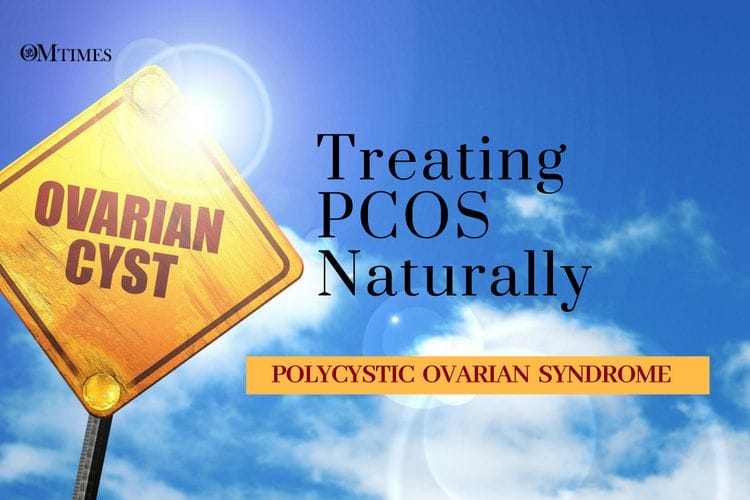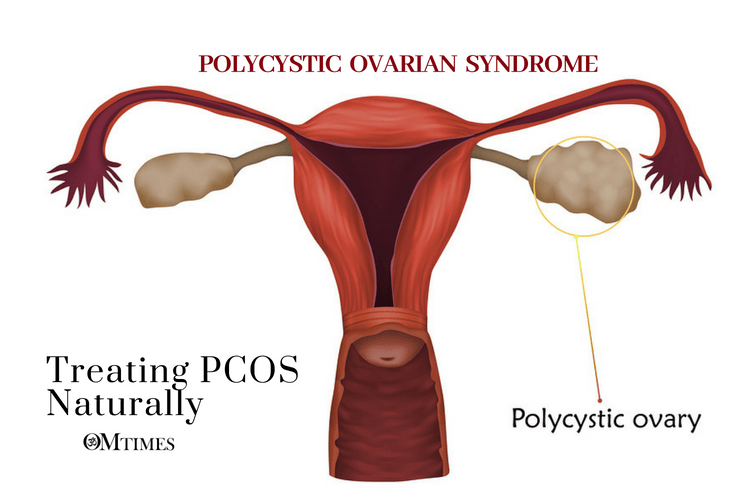Natural Treatments for Polycystic Ovarian Syndrome

PCOS (Polycystic ovarian syndrome) is an endocrine disorder that is the most common hormonal disorder among women of reproductive age and is a leading cause of infertility.
Treating Polycystic Ovarian Syndrome Naturally
Polycystic ovarian syndrome, PCOS, occurs among all races and nationalities. The primary features are lack of regular ovulation and irregular or absent periods. There is also excessive amounts or effects of androgenic hormones. The symptoms and severity of the syndrome vary greatly among women. While the causes are unknown, insulin resistance (often secondary to obesity) is heavily correlated with PCOS.
Other symptoms may include acne, weights gain (but not always) or have trouble losing weight, male pattern baldness or thinning hair on the scalp, hair growth on the face, back, or chest or sometimes, high blood sugar (hyperglycemia). About half of women with PCOS have high insulin, and blood sugar levels called insulin resistance. When the body doesn’t use insulin well, blood sugar builds to high levels. If not treated, this can lead to diabetes. High cholesterol levels are also common with PCOS.
In Polycystic ovarian syndrome, there are multiple cysts in the ovaries, which are actually small, undeveloped follicles that have had their growth stunted. The cysts, as well as the connective tissue around them, produce male hormones called androgens. Androgens are then released into the bloodstream and alter the feedback within the hypothalamic-pituitary-ovarian axis (HPO axis). The amount of estrogen then increases progesterone causing an increase in testosterone and Luteinizing hormone (LH).
The two Western medicine drugs used to combatPolycystic ovarian syndrome are Metformin and The Pill. Both of these drugs are actually depleting the body of vitamin B, B12, Folic Acid, Vitamin C, Magnesium, and Zinc. Even without these drugs, Polycystic ovarian syndrome robs the body of nutrients.
Treating Polycystic Ovarian Syndrome Naturally
The two most important key factors that any woman could do to lower her risk of Polycystic ovarian syndrome is to eat heart-healthy, low glycemic foods, along with regular exercise.
Foods to Avoid:
-Cut out all forms of refined sugar
-Cut out all refined (simple) carbohydrates. Follow the Full Spectrum Diet. This says to cut out all white foods, which include all white bread, rice, pasta, low fiber foods, most breakfast cereals, and rice cakes.
-Reduce animal products and fats
-Avoid all soda, fruit juice, and sugary drinks
-Avoid milk and dairy products
-Avoid alcohol and caffeine
-Avoid fertility diets that suggest you eat large amounts of yams. This is not appropriate for PCOS
-Reduce the intake of oily, fried, and sugary foods, fried snacks and fast foods
-Do not miss meals, and do not starve regarding the total quantity of food
Foods You Should Eat:
-Eat adequate amounts of protein
-Eat as many fresh vegetables as you can
-Eat foods, which nourish the liver such as dark green vegetables, lemons, carrots and beets
-Eat fruit light in sugar and sweetness such as berries
-Eat complex carbohydrates (lower glycemic carbs), which tend to have more fiber such as bran cereal, brown rice, whole wheat, whole grains and nuts and grains like quinoa, whole oats, and bulgur.
These foods help women with the Polycystic ovarian syndrome to maintain steady blood sugar and insulin levels and may assist in weight loss. A diet composed of mainly low-GI foods will also help to combat the effects of insulin resistance.
If you have a Polycystic ovarian syndrome, consider eating more of your calories in the morning. Include plenty of lean protein, complex carbohydrates, and healthy fat in each meal and snack. Women who consumed most of their calories early in the day experienced an increase in ovulation.
Diet Study
(Clinical Science 2013;125:423–32)
Researchers randomly selected 60 normal-weight women (55 completed the study) with Polycystic ovarian syndrome to follow a “breakfast diet” or a “dinner diet” for 90 days. The women on the breakfast diet were instructed to eat 980 calories (kcal) for breakfast, 640 calories for lunch, and 190 calories for dinner. The dinner diet consisted of 190 calories for breakfast, 640 calories for lunch, and 980 calories for dinner. In this way, the breakfast group consumed 54% of calories in the morning, 35% for lunch, and 11% at dinner; this pattern was reversed for the dinner group. The researchers collected blood samples and diet records to assess adherence to the prescribed diet. Compared with the dinner group, the breakfast group experienced beneficial reductions of several health markers, including an increase in ovulation rates. They also experienced a 105% increase in sex-hormone-binding globulin (SHBG) levels, which is a good thing, because if excessively high amounts of sex hormones, including testosterone, are bound up by the SHBG protein, they aren’t free to interact with cells and cause symptoms.
Supplements and Herbs
-Chlorophyll helps reduce symptoms of hypoglycemia without raising blood glucose levels
-Include supplements that help improve insulin resistance such as B vitamins, magnesium, alpha lipoic acid, and chromium. Chromium increases the sensitivity of insulin receptors. The recommended dosage is 300 micrograms/day.
-Essential fatty acids, including flax oil, fish oil, evening primrose oil (Oenothera biennis), and black currant oil, act as anti-inflammatory and hormonal regulators.
-Supplementation with antioxidants, including zinc, and vitamins A, E, and C is also recommended.
-Western herbal medicine uses phytoestrogen and phytoprogesteronic herbs, such as blue cohosh (Caulophyllum thalictroides) and false unicorn root (Chamaelirium luteum), as well as liver herbs, like dandelion (Taraxacum mongolicum), to work toward hormonal balance.
-Acupuncture works on the body’s energy flow according to the meridian system. Acupuncture helps regulate hormone imbalances, increased blood flow to the uterus and helps to control insulin levels. Chinese herbs, such as gui zhi fu ling wan, can be useful. Treatments should be once or twice a week and must be accompanied by the right herbal formula that should be taken along with treatment for at least 3 – 6 months.
-In naturopathic medicine, treatment focuses on helping the liver function more optimally in the hormonal balancing process.
-Exercise is the second most crucial key to the Polycystic ovarian syndrome. Exercise helps the body’s cells use glucose as energy, reducing blood glucose levels. A structured exercise plan can help the body use insulin more efficiently and gradually lower insulin levels. Regular exercise also improves circulation, reduces blood pressure, increases levels of high-density lipoprotein (HDL), your good cholesterol and helps with weight loss.
You will also enjoy Managing Diabetes and Top 10 Tips for Weight Loss Nutrition
About the Author
Connect with Andrew Pacholyk MS L.Ac at peacefulmind.com “Living Life, Consciously” Alternative medicine and therapies for healing mind, body & spirit!
Andrew Pacholyk, MS, L.Ac. has been in the alternative health field for over 18 years. He is an expert in treating infertility and gynecology, pain management and anti-aging therapies. His knowledge, expertise and clinical training has offered him the ability to experience and continually learn about the body and its energy system in health as well as in disease.






